| Umělec 2001/2 >> The Other Biennale | Просмотр всех номеров | ||||||||||||
|
|||||||||||||
The Other BiennaleUmělec 2001/201.02.2001 Robert Rigney | biennale | en cs |
|||||||||||||
|
"Touchy-feely, multi-culti, we are one big happy, jolly, global family, and if not, at least we should be. That’s the message of this year’s Berlin Biennale, which under the official motto “Concern, contribution, connectedness” presents the work of mo-re than 49 artists from 31 countries at the Postfuhramt on Oranienburgerstrasse, the Kunst-Werke on Auguststrasse and the S-bahn Bogen in Friedrichshain and offers everything from Thai massage to take-away Indonesian sarongs served up with a hefty dollop of PC jargon and references to “hegemony” and “otherness.” Ultima-tely, the warm and cuddly message of this year’s Berlin Biennale comes suspiciously close to that of a United Colors of Be-netton ad campaign. “We are one world,” as Saskia Bos says.
Bos, 48, director of the De Appel Founda-tion in Amsterdam and curator of this year’s Berlin art spectacle, knows that promoting ideologically correct, feel-good art is a risky business. “There is a danger that you would end up with a happy-go-lucky, one-big-happy-world kind of thing, and that would be deadly,” she says sitting at the Dan Graham-designed café pavilion in the Kunst-Werke courtyard looking out on a Walter Benjamin quotation (“You can declare that a work that shows the correct political tendency need show no other quality. You can also declare that a work that exhibits the correct tendency must by necessity show every other quality.”) and Carsten Höller’s tubular, stainless steel funhouse slide, a relic of the last Berlin Biennale in 1997. “Still,” adds Bos, “we are, after all, one world; we are all connected; so let’s relate and have fun.” Ms Bos has come down from her temporary lodgings in the Kunst-Werke to explain for the millionth time just how this Berlin Biennale differs from the last Berlin Biennale and what the point of a Berlin Biennale is anyway now that just about every big city around the globe has its own Biennale. But before explaining what this Biennale is, Ms Bos wants to talk about what this year’s Biennale is not. “We are interested in the self not in a complacent way, not inner emotions, not art that is self referential,” says Bos. “We are not interested in jargon. You won’t find a hermetic art language here. Nor am I interested in art that strives for a shock effect. What I am interested in is art that focuses on ‘the other’; art that relates to other cultures. Confrontation. Commit-ment. Connectedness. A new message for the new millennium.” Bos says she has organized the Berlin Biennale in order to promote Weltoffenheit (world openness), “but not in a politically correct way,” she says. What she wants to see and what she hopes to have presented here is art which directly engages the viewer on a one-to-one, person-to-person basis: art that doesn’t just employ metaphors, but reaches out and brings the viewer into new relationships, an art which strives to establish direct contact with individual members of the audience. Practically speaking, at the Berlin Bien-nale this means Surasi Kusolwong inviting Biennale goers to indulge in a soothing Thai massage; or Navin Rawanchaikil giving away sarongs; or else Superflex, a team of socially conscious artists from Denmark, setting up a temporary media lab to forge links with pro-western kids in the former Yugoslavia in order to foster dialogue and promote Balkan DJ culture; or Dan Peterman and the 61st Street Bottle Cap Pasta Company serving up free spaghetti in the name of international solidarity. Which is all well and good. How-ever, hanging out in the Kunst-Werke courtyard, feeling limber and relaxed after a backrub and having just sampled some tasty Peterman pasta, one inevitably wonders whether in fact the Middle Eastern mobile sandwich salesman making his rounds is just a guy trying to earn an honest buck or an artist offering what Charles Esche in the Biennale catalogue refers to as a “real existing” model of “free exchange within the enclosure of cultural experimentation.” As Esche’s essay shows, for all the much-touted plain-spokenness of this year’s Biennale, there is quite a bit of pseudo intellectual spin given to what, when it all comes down to it, is essentially a nice little gimmick. Can one really see, as Esche does, “a space to open an interrogation of economic and social value” in a Thai massage? Esche writes that he sees the Berlin Biennale as occupying a niche where market forces don’t penetrate and where “other models of human aspiration can exist within the current economic paradigm,” where “visual culture” might offer an alternative to capitalism. That must be, at best, wishful thinking, as the art at the Berlin Bien-nale is on fairly sympathetic terms with capitalism. Take, for instance, Muntean and Rosen-blum from Vienna, who have fashioned a room in the Postfuhramt to resemble the interior of a fast food restaurant and decorated it with photographs of young every-day fashion waifs seated in an actual McDonald’s restaurant, either facing the viewer or engaged in eating a Big Mac under idealized paintings of pretty vacant teeny-boppers in fashion magazine poses bearing all the familiar brand logos and contemporary fashion accessories. Ro-senblum says that she is fascinated by these figures, “not because they are young and beautiful, but because they are people without identity.” In other words, ideal and idealized consumers. The viewer is even invited to become willingly complicit in this glamorous McWorld by donning a McDonalds-style clean-up crew uniform and posing before the camera holding a mop. Then there is Patricia Piccinini’s installation in the foyer of the Postfuhramt, entitled Truck Babies which consists of two miniature trucks — one painted pink, the other baby blue — inspired, writes Picci-nini, by an excursion along an American highway in which she was struck by the absence of wildlife and fancied that the trucks thundering by her on the road were the “real wildlife” which then gave rise to the thought, “where were the trucks’ babies?” and consequently inspired her to fashion these two works of sculpture in order to question “the status of ‘the natural’”. After that, finding herself in Tokyo, the artist approached a couple of ko-garu girls — Japanese mall rats — fascinating to the artist because of their “awareness of the ephemeral” and how they “embrace new technologies and new ideas,” and showed them pictures of her Truck Ba-bies, asking what they would say by way of advice to her Truck Babies on how to grow up and then videotaped their responses, which are presented here in the Postfuhramt along with the two trucks. This whole rather absurd endeavor was motivated, writes the artist, as an inquiry into how one regards the natural world, “which to me is a political question, rooted in lived experience. I am interested in what is natural now, how our understanding of it has shifted.” Furthermore, Picci-nini is “fascinated by consumerism, by its variety, complexity and seductiveness. I acknowledge its culpability, but I cannot help but love it.” The convoluted nature of both Mun-tean/Rosenblum’s and Piccinini’s works reflects their grasping attempts at visualizing pre-formulated hypotheses. More-over there is nothing in these works to suggest any kind of critical distance from consumer society. And who says there should be? Why should an artist be a moral force above it all? “An artist invents new ways of swimming,” writes Berlin Biennale-contributing theorist Nicolas Bourriaud in the exhibition catalogue. In other words, new ways to go with the flow; new, persuasively sexy ways to be a consumer. And perhaps that’s the new role of contemporary art as presented in shows like the Berlin Biennale: to sugar-coat the bitter economic medicine of globalization. Naturally, the organizers of the Berlin Biennale would shiver at the thought. God forbid that an artist should be seen as reinforcing established values. Everyone likes to see themselves as subversive and avant-garde. And that’s why the organizers have come up with such terms as “engaged autonomy” (Escher) to describe the artistic positions here, which basically consist of convenient ways to conform and rebel at the same time, privately licking the hand that feeds you while publicly pretending to bite it for the benefit of an audience weaned on the myth of a rebellious avant-garde. In the end what all this amounts to is playacting, fantasy and self-delusion. The stakes are low here at the Berlin Biennale. No one’s even playing for real money. To quote nearby graffiti, it’s “soft resistance,” which is no resistance at all. "
01.02.2001
Рекомендуемые статьи
|
|||||||||||||
|
04.02.2020 10:17
Letošní 50. ročník Art Basel přilákal celkem 93 000 návštěvníků a sběratelů z 80 zemí světa. 290 prémiových galerií představilo umělecká díla od počátku 20. století až po současnost. Hlavní sektor přehlídky, tradičně v prvním patře výstavního prostoru, představil 232 předních galerií z celého světa nabízející umění nejvyšší kvality. Veletrh ukázal vzestupný trend prodeje prostřednictvím galerií jak soukromým sbírkám, tak i institucím. Kromě hlavního veletrhu stály za návštěvu i ty přidružené: Volta, Liste a Photo Basel, k tomu doprovodné programy a výstavy v místních institucích, které kvalitou daleko přesahují hranice města tj. Kunsthalle Basel, Kunstmuseum, Tinguely muzeum nebo Fondation Beyeler.
|







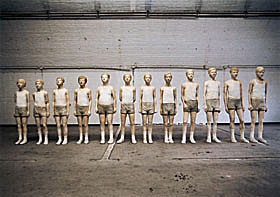

















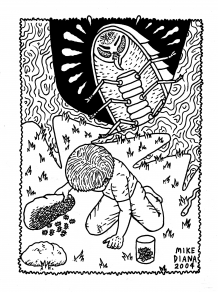




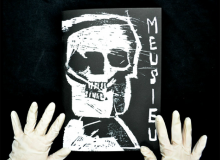
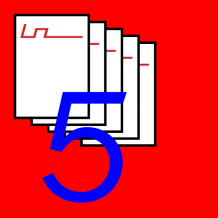
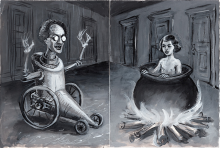
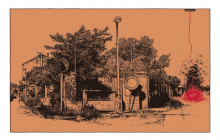


 New book by I.M.Jirous in English at our online bookshop.
New book by I.M.Jirous in English at our online bookshop.
Комментарии
Статья не была прокомментированаДобавить новый комментарий